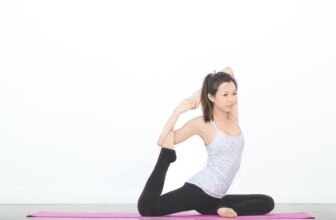Unlocking the Mind: The Transformative Power of Guided Imagery
Guided imagery is a therapeutic technique that harnesses the power of imagination to promote mental, emotional, and physical well-being. Through visualization and focused attention, individuals can access deeper parts of their minds, foster creativity, reduce stress, and create pathways to healing. This article will delve into the many facets of guided imagery and its transformative power, illustrated through real-life examples, a comprehensive FAQ, and resources.
Table of Contents
- What is Guided Imagery?
- Historical Context
- The Science Behind Guided Imagery
- Applications of Guided Imagery
- How to Practice Guided Imagery
- Q&A Section
- Resources
- Conclusion
What is Guided Imagery?
Guided imagery is a mental process that encourages individuals to visualize scenes, images, or situations that evoke feelings of relaxation, healing, and positivity. Typically facilitated by a trained professional, this technique can also be practiced individually. The imagery used can involve peaceful natural environments, specific experiences, or even future aspirations, designed to elicit a beneficial emotional response.
Components of Guided Imagery
- Imagination: Processing and constructing visual images in the mind.
- Relaxation Techniques: Engaging in breathing exercises, mindfulness, and muscle relaxation to enhance receptivity.
- Focus: Maintaining concentration on the guided imagery experience.
Historical Context
Guided imagery has roots in ancient practices, including:
- Shamanic Traditions: Early shamanistic practices used visualization in rituals to promote healing.
- Eastern Philosophies: Concepts such as visualization are integral to many Eastern traditions, including Buddhism and Taoism.
- Psychology: The modern psychological approach began to take shape in the mid-20th century with pioneers such as Dr. Herbert Benson, who studied the effects of relaxation and visualization.
The Science Behind Guided Imagery
Numerous studies have demonstrated the efficacy of guided imagery in various applications:
Neurological Insights
Guided imagery activates different areas of the brain, particularly those involved in imagination and emotion, impacting physical responses in measurable ways. Research indicates that this form of mental imagery can:
- Reduce stress by lowering cortisol levels.
- Enhance emotional well-being by stimulating the production of serotonin and dopamine.
- Influence physical health by promoting healing and pain relief.
Case Study: A Clinical Perspective
A study conducted in 2015 at a prominent medical center evaluated patients with chronic pain. Divided into two groups—one receiving guided imagery therapy and the other standard care—the results showed that the guided imagery group reported significant reductions in pain levels and improved quality of life after eight weeks.
Applications of Guided Imagery
Guided imagery has a broad range of applications, including:
1. Stress Reduction
Individuals experiencing chronic stress can utilize guided imagery for relaxation, leading to lower blood pressure and reduced anxiety levels.
2. Pain Management
Chronic pain patients have reported enhanced coping mechanisms through visualization techniques, effectively altering their perception of pain.
3. Mental Health
Guided imagery can aid individuals with anxiety, depression, and PTSD by fostering a sense of safety and peace within the mind.
4. Performance Enhancement
Sports psychologists often use guided imagery to help athletes visualize successful performances, thereby improving outcomes through enhanced focus and reduced anxiety.
5. Medical Healing
Research in behavioral medicine suggests that guided imagery can complement traditional medical treatments, particularly in cancer care, where patients report less pain and anxiety during treatments.
How to Practice Guided Imagery
Engaging in guided imagery can be done through various methods:
Self-Guided Sessions
- Find a quiet, comfortable space where you can focus.
- Close your eyes, take deep breaths, and visualize a serene environment—like a beach, forest, or any place where you feel at peace.
- Focus on sensory details: smell, touch, sound, and vision.
- Spend 10-20 minutes in this visualization, gradually bringing yourself back to the present.
Using Audio Guides
Many resources are available online or through mental health professionals who provide audio-guided imagery sessions that lead you through various scenarios.
Q&A Section
Q: Can anyone practice guided imagery?
A:
Yes, guided imagery is accessible to anyone. It can be beneficial for people of all ages and backgrounds.
Q: How often should one practice guided imagery?
A:
Practicing guided imagery several times a week can yield the best results, but even a single session can be beneficial.
Q: Are there any risks associated with guided imagery?
A:
Generally, guided imagery is safe. However, individuals with PTSD or severe anxiety should consult a professional to tailor sessions appropriately.
Q: Can guided imagery be performed alone?
A:
Yes, many individuals successfully practice self-guided imagery. Utilizing audio guides can also enrich the experience.
Q: How does guided imagery relate to mindfulness?
A:
Guided imagery and mindfulness both require a focus on the present moment, albeit through different techniques. Guided imagery utilizes visualization, while mindfulness often emphasizes awareness of breath and body sensations.
Resources
| Source | Description | Link |
|---|---|---|
| American Psychological Association | Information on various therapeutic practices, including guided imagery. | Visit |
| The Imagery Network | A comprehensive resource on guided and creative imagery. | Visit |
| Guided Imagery Resources | Audio guides and written resources for practitioners and individuals. | Visit |
| Books by Dr. Gay Hendricks | Explore various books on imagery and personal growth. | Visit |
| National Center for Complementary and Integrative Health | Research and articles on complementary health practices. | Visit |
Conclusion
Guided imagery stands out as a powerful therapeutic approach that can facilitate profound changes in one's mental, emotional, and physical state. From its historical context to modern applications, the technique has demonstrated transformative potential across various domains of health and performance. As research evolves, future trends may include personalized guided imagery programs integrating technology, such as virtual reality and biofeedback.
Pursuing further research and exploration into guided imagery could help professionals understand its full capabilities, tailoring it for specific populations, such as those with PTSD, chronic pain, or anxiety disorders. As awareness grows, guided imagery may become an integral part of holistic wellness programs worldwide.
Disclaimer
The information provided in this article is for educational purposes only and should not be considered as a substitute for professional medical advice, diagnosis, or treatment. Always seek the advice of your healthcare provider with any questions you may have regarding a medical condition.










